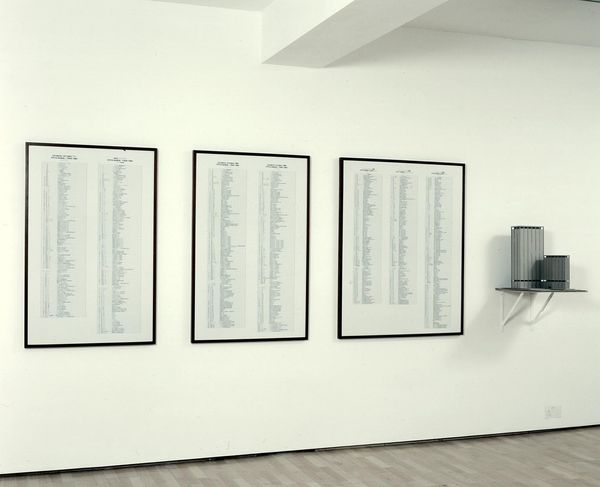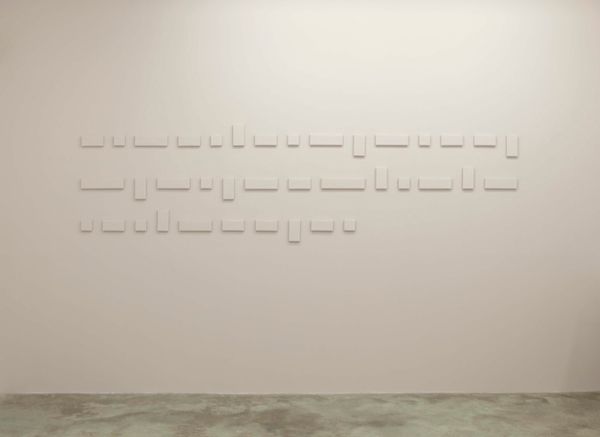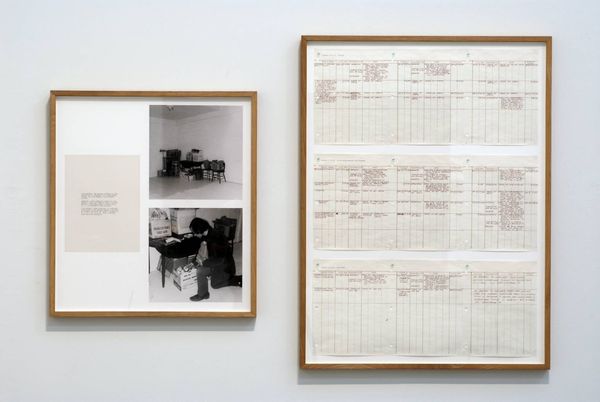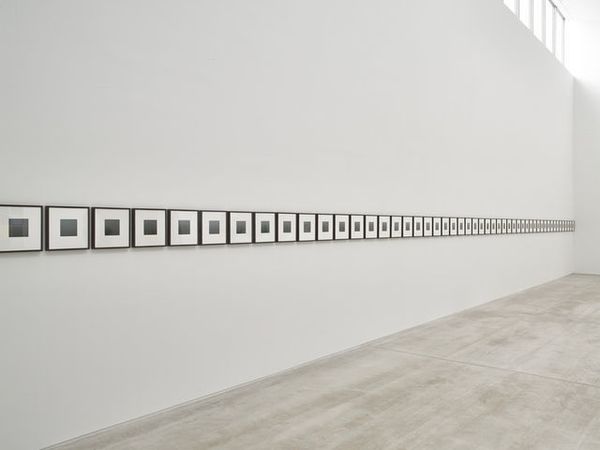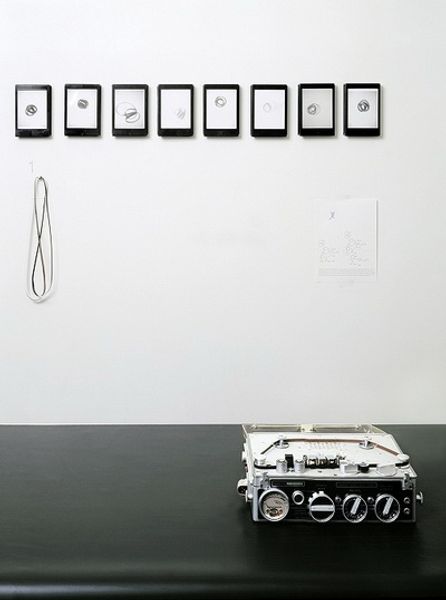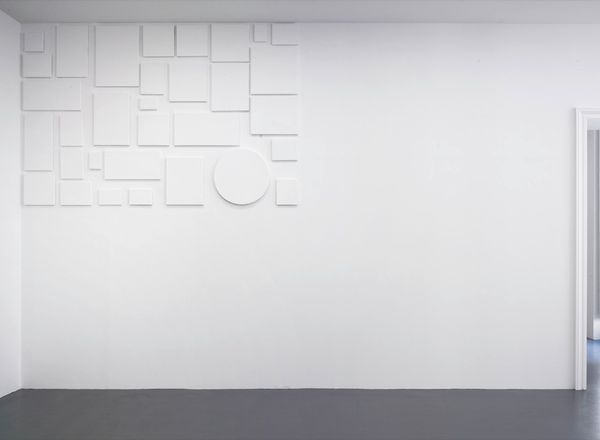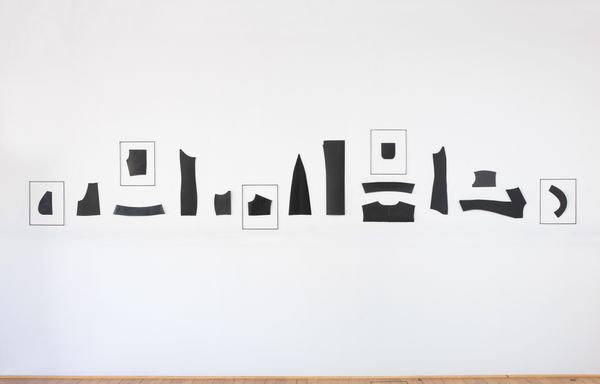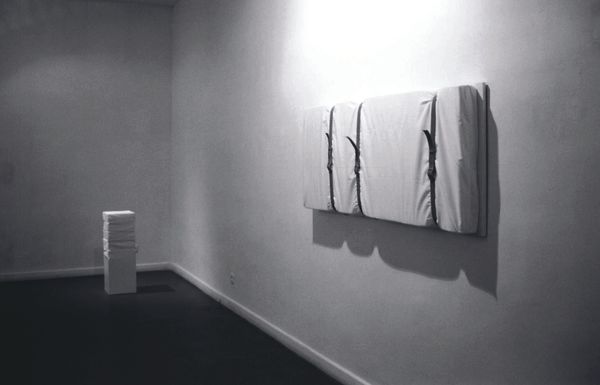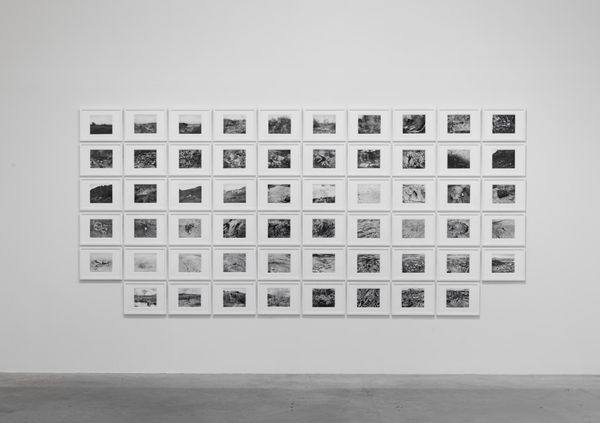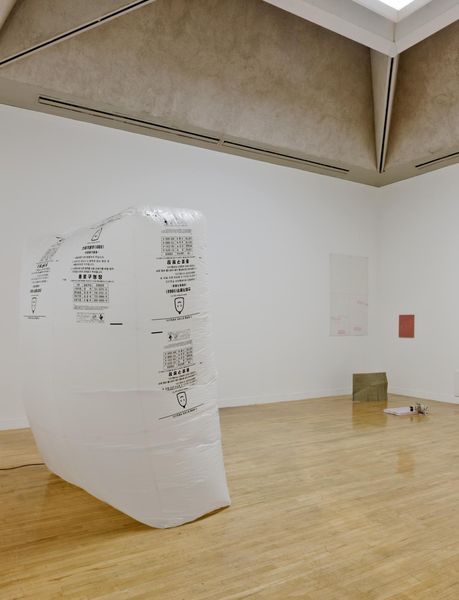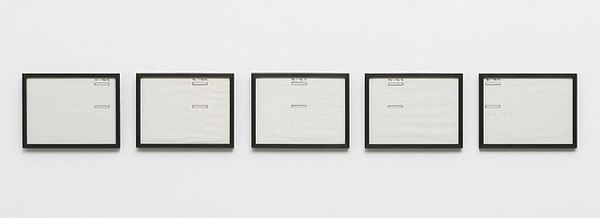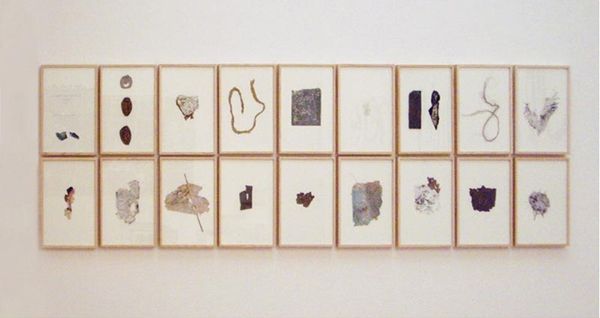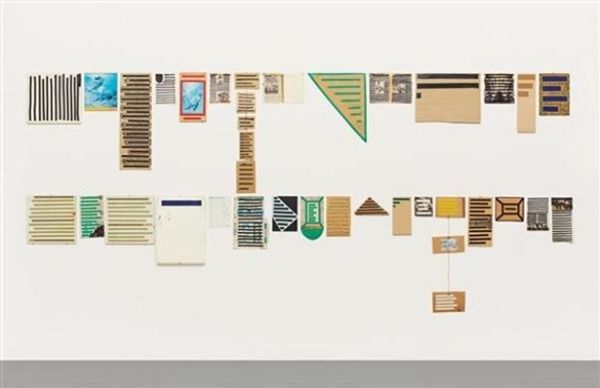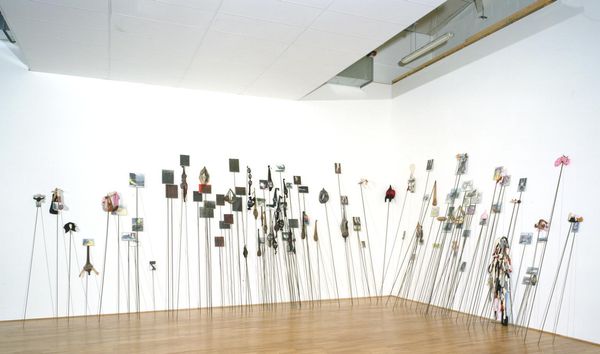
Clock (One and Five), English/Latin Version (Exhibition Version) 1965 - 1997
0:00
0:00
Copyright: © ARS, NY and DACS, London 2014 | CC-BY-NC-ND 4.0 DEED, Photo: Tate
Editor: This is Joseph Kosuth's *Clock (One and Five), English/Latin Version*. It’s quite stark, with the clocks and dictionary definitions. It makes me wonder about the relationship between an object and its meaning. What cultural echoes do you hear in this piece? Curator: The pairing of the clocks with the dictionary definitions reveals a fascinating tension. Time, as depicted by the clock, is a universally understood symbol. But the definitions beside it, of words like 'time' and 'object', demonstrate how language, though meant to clarify, can also abstract meaning. Editor: So, the clocks are definite, and the words are fluid? Curator: Precisely. It prompts us to consider how symbols evolve over time, shaped by both individual and collective understanding. Editor: That’s a great point. I hadn't thought about the active role we play in interpreting these symbols. Curator: Indeed. And remember, that interplay between the concrete and the conceptual is where art often finds its power.
Comments
tate 6 months ago
⋮
http://www.tate.org.uk/art/artworks/kosuth-clock-one-and-five-englishlatin-version-exhibition-version-t07319
Join the conversation
Join millions of artists and users on Artera today and experience the ultimate creative platform.
tate 6 months ago
⋮
This work comprises a clock, a photograph of it, and three enlarged entries from an English/Latin dictionary for the words ‘time’, ‘machination’ and ‘object’. In its combination of a real clock with a photographic image and related linguistic definitions, this work can be seen as a meditation on the nature of time and on ways of representing the concept of a clock. Gallery label, September 2004
